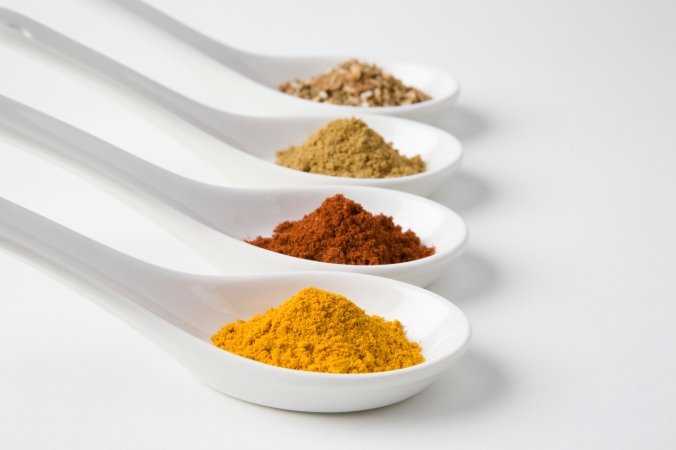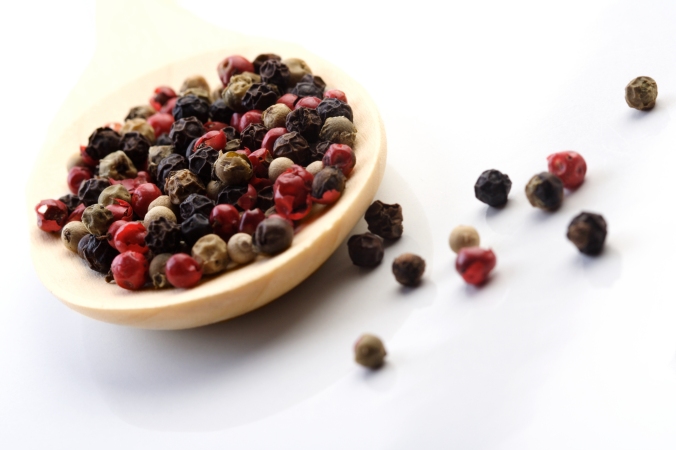Seasoning is the process of adding salt, acids, herbs, or spices to enhance the flavor of food.
Basic Information
Herbs and spices-these are what what we think of when the word seasoning is brought up. While they are definitely used to add specific flavors to the dish, they are meant to enhance the natural flavors. Acids are also added in small amounts for the same purpose.
Seasoning encompasses a lot of different things and its meaning changes a bit from chef to chef, but the main star of the seasoning show is salt. Salt on a basic, fundamental level is the single most important element when it comes to cooking and building a flavor. When you add salt to things a wonderful process called osmosis is set in motion. Through osmosis, the salt draws out fluids from within the cell, along with even smaller molecules known as aromatic molecules. Flavor (outside of the five basic flavors -sour, sweet, salty, bitter, and umami), is detected through our sense of smell. With the help of an oil or fat, these lipid soluble (trapped by fat) aromatic molecules will coat whatever substance they came out of. Whenever you chew your food, these molecules are disrupted and then released through your olfactory system. That’s why when you sweat or saute vegetables you add pinches of salt. SCIENCE!

This is why salt is so important; by drawing out these aromatic molecules it cause the essence of that particular flavor to come out of the cells to play beautiful music with our taste receptors. Imagine if you made a soup without the aid of salt, it would just taste like a bowl of liquid with a bunch of different ingredients. The use of salt takes all of the individual aromatic molecules from each separate ingredient and blends their flavors together, creating what the fancy chefs refer to as a flavor profile.
Salt is the conductor of the orchestra, while spices and herbs are the violin and horn players; they add the flare while also making the dish more rounded and whole. Spices are the dried fruit, bark, seeds, and sometimes a vegetable used for everything from flavor to preservation, and from coloring to finishing a dish. You often hear of people “toasting” their spices. What this does is excite those aromatic molecules we were discussing earlier and traps them within the natural oils present in the spice itself; sort of like charging a battery. Once the spice is ground, all of those flavor pockets are released into the food creating a richer product.
Herbs, on the other hand, are a wide ranging group of aromatic plants. They work in the same way as spices, releasing the aromatic molecules (word of the day!) that are trapped within. However, they are much more delicate; meaning as soon as you cut or tear your herbs, the molecules are consistently being released and overtime will lose their flavor. This is why recipes often have you wait to add the fresh herbs closer to the end of the cooking process. This volatility is what makes herbs so good to infuse in oils. The oil traps all of those aromatic molecules and often times their colors within the oil itself, and preserves the flavors. Drying herbs is an often used tactic to preserve them for even longer. With dried herbs you should add them much earlier than their fresh counterparts, to rehydrate them. Beware though, this concentrates the flavor heavily. Whenever substituting dried herbs for fresh, only use 1/3 of the what the recipe calls for.

Following recipes is a great way to gain confidence in the kitchen, making you the master of your dinner. The end goal, however, should be getting to the point where you don’t have to measure out every little thing with a measuring spoon. It is highly recommended to store your salts, herbs, and spices in wide mouth jars so that you are forced to use your fingers to pick them up. This allows you to begin to gain a much deeper understanding on how an ingredient feels between your digits; the difference between a two finger, three finger, four finger, etc. pinch and how much of each of those ingredients effects the over all flavor of the food. When you are shaking it through a perforated top, you really have no idea how much you are adding and will result in an inconsistent flavor. It’s all about getting more connected to your food.
Acids, while they are most certainly their own animal, are very important when it comes to creating a well rounded flavor. In small amounts, they balance out sweet and salty flavors. In larger amounts, they can completely change the whole profile of the flavor while still helping bring out all flavors in the other ingredients.
This blog has been adapted from Chef Nic’s course on ‘Understanding Seasoning‘. To see the full course and an engaging video lesson from Chef Nic click here:
https://live.theupbeetkitchen.com/m/recipes/components/skill/1088/0/course_view/52/Second%20Cook/4